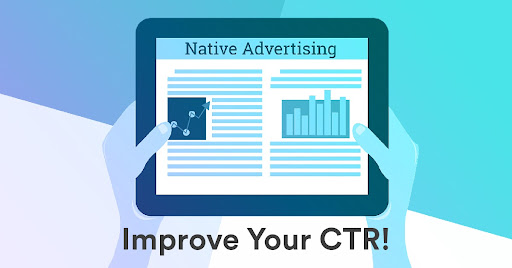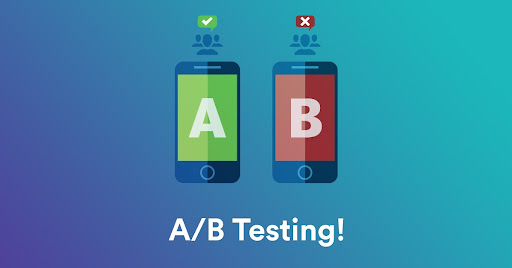
Increasing the CTR for your campaigns is the goal of every affiliate on the web. Anyone can make promises, but only the ones that provide real value get to keep making money. That's where this article comes in. We will show you how to extract meaningful data for your A/B tests and then proceed to use that data to improve your native campaigns for the best results.
What are Native Ads?
Native ads are designed to mimic their surrounding environment, which is why we refer to them as "native" – they feel like organic content. Because of this, they can blend into any page and remain easy on the eyes and appealing enough to make people click. That's what makes native ads such a great opportunity for affiliates – not only will you be getting clicks with relevant content, but you'll also be doing it on a site that is known for its high quality.
What Is CTR?
Well, it's simple: CTR stands for Click-Through Ratio and represents the number of clicks that your ad receives divided by the number of times it's shown. It is expressed in percentage points and varies depending on the type of campaign you're running (banner, postback, interstitial ads, etc).
A CTR of 1% means that every time an ad is shown, it gets clicked on by 1% of the users. It's one of the most important indicators you'll have to follow for your campaigns, as it can help you increase or decrease your revenue.
What Is A/B Testing?

A/B testing is a way of comparing two ads or landing pages to see which one performs better. You can think of it as a simple online quiz – the only question is "which ad will generate more clicks?" Depending on your goals and objectives, there are several things you might want to test:
Text - Is using bold text improving my CTR? What about italics? Font size? Will personalization increase my CTRs as well?
Images - Is using different images for the same ad better or worse than just showing one image? Should these images be rotated randomly or would it be better to have them fixed in place so users see the changing ads more often?
Landing Page - Is changing the name of the product I'm promoting going to affect my CTRs? What about changing the color of call-to-action-buttons?
How To Set Up Your A/B Testing Campaigns
Define your goals
First of all, you need to know what you're aiming for. The most common way to measure the success of an affiliate campaign is by tracking CTRs over time so they can be used in future predictions. Other than that, there are other variables you can test if your goals are different.
Split the traffic
Now that you're clear about what kind of results you need, it's time to get into the details. You should know that there are two ways to set up A/B testing campaigns: 1) create one ad with several slightly different variations (text, images, etc) or 2) create two separate ads and show them to different segments of your audience.
Compare the data
Once the test is over, you'll need to collect all your data and see how it compares: did one ad get more clicks than the other? How much did CTRs vary between both ads and how does that affect your profits? This is the time when you'll decide which ad to use for your future campaigns.
Repeat if necessary
The good thing about A/B testing is that it lets you adapt to the market. If one specific variation causes a significant drop in CTRs, there's no need to stop the campaign – just change it and move on.
The bad? Since there are so many variables to consider, you might want to hire a professional for help with setting up native A/B testing campaigns.
Common mistakes with A/B Testing

Targeting the wrong audience
You can waste a lot of money running ads to people who are not interested in your product. Make sure you look at demographic information before creating an ad. For example, if you're promoting an app that lets you order cosmetic products, don't target males between the ages of 18-35. They may be interested in downloading it but they aren't your core demographic.
Creatives must be consistent
When running ads, make sure you are using the same creatives on all platforms to maintain brand consistency across multiple touchpoints with your target audience. Do not simply reuse your desktop creative on mobile and vice versa. Messages, images, and calls-to-action (CTAs) must be consistent with one another.
Not doing A/B testing often enough
You should be running new tests every few days or weeks to keep up with the fast-paced nature of the industry. If your ads are not working well or if your target audience is shifting, you should be testing new creatives and copy to keep up with market demands and ensure you're running the most effective ads possible.
Testing too many changes at once
When A/B testing, it's best to only change one thing at a time. This is to make sure you are isolating the variable you're measuring (i.e. one ad factor), and not confusing your audience with too many messages at once. Keep it simple, or else you won't be able to tell which elements of your ads are truly effective.
Not testing for CTRs
This is by far one of the biggest mistakes an advertiser can make. When running A/B tests, do not rely solely on engagement metrics like click-through rates to determine the success of your ad. You should be testing for conversions as well to ensure you are increasing brand awareness and generating qualified leads over time.
A/B TESTING IS ESSENTIAL FOR THE SUCCESS OF YOUR AD CAMPAIGN
If you want to generate better results with your ad campaign, make sure to take the right approach and avoid these common mistakes. It's also important that you A/B test often and on all available platforms if you want to stay ahead of the curve and be one step ahead of your competitors.
How Can You Use A/B Testing To Improve Your CTRs For Native Ads?
Now that we have discussed the basics of A/B testing and its importance, let's look at a way you can improve your CTRs for Native Ads.
Let's assume you run native ads and you want to increase the CTRs of your most recent Native Ad. You would start by creating two new versions of the ad: Version A and Version B for example. These new ads will be almost identical in every way but there will be one difference between them to see which ad generates a higher CTR.
Here are the possible variables you could test:
- Different Headline
- Different Images
- Different CTAs
- Different Angles
- Different Copy
- Different Platforms
- Different Placement
- Different Timing
- Different Audience
- And a combination of all of these at once
To ensure you get the most accurate results possible, make sure you run these tests on each platform (i.e. desktop and mobile). If you're running ads on sites like Facebook and Twitter and want to improve your CTRs, make sure you run the tests on both of these platforms.
Once you've A/B tested your ads, compare the results. You'll likely see that one of these variables is more effective than the others. Make note of what's working well for your ad creative, look at other Native Ad campaigns to see what they are testing, and use this information to inform future tests both for this ad and future campaigns.
Final Words
With so many variables affecting CTRs of Native Ads on different platforms, you must be able to test every element of your ads to find out what's working best for you. Your ad testing efforts will be useless if your data is not reliable, so make sure you conduct solid tests and isolate each variable to get the most accurate results possible. If you keep up with A/B testing and implement these tips into your Native Ad campaigns, you will be able to garner a better CTR for your ads, prevent wastage of budget, and most importantly increase conversions.
If you're looking to improve your click-through rates for Native Ads, there's no better way than A/B testing. It's important to always be testing new variables and see what works best so that you can increase the CTRs of your ads and generate more qualified leads.
What is your experience with A/B testing? Do you use it regularly in your campaigns? Share your experience with us in the comments below!